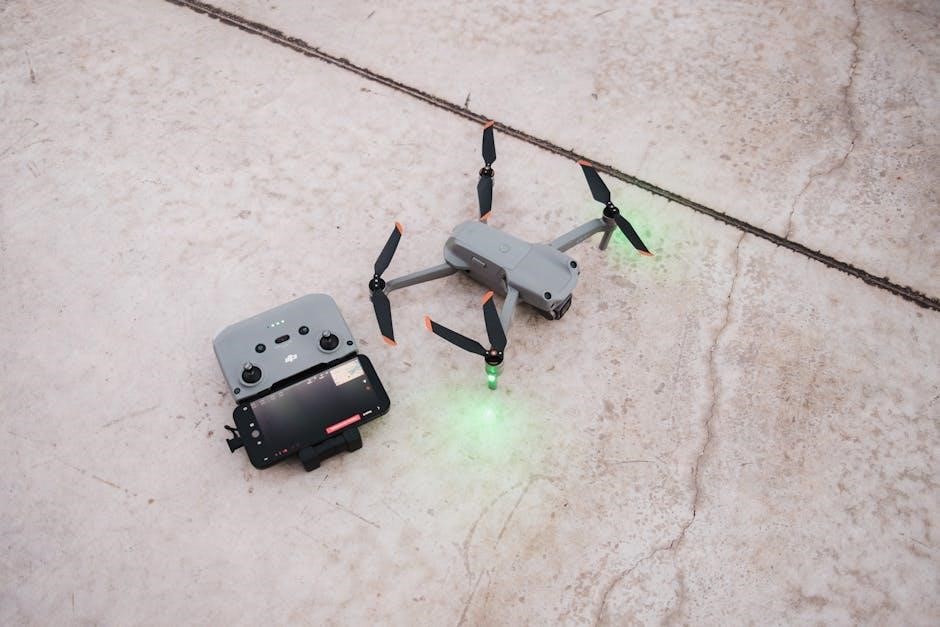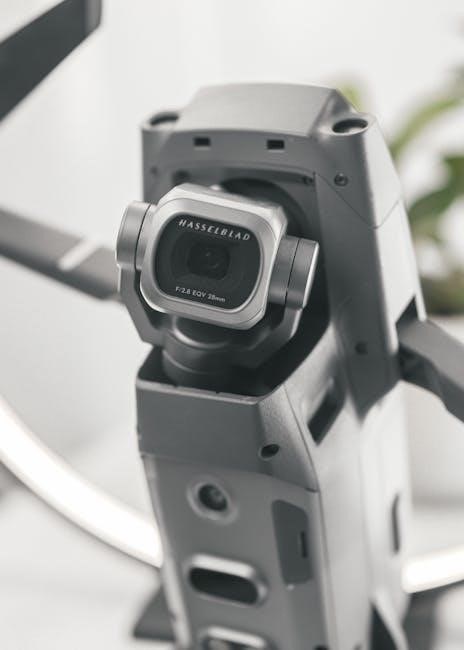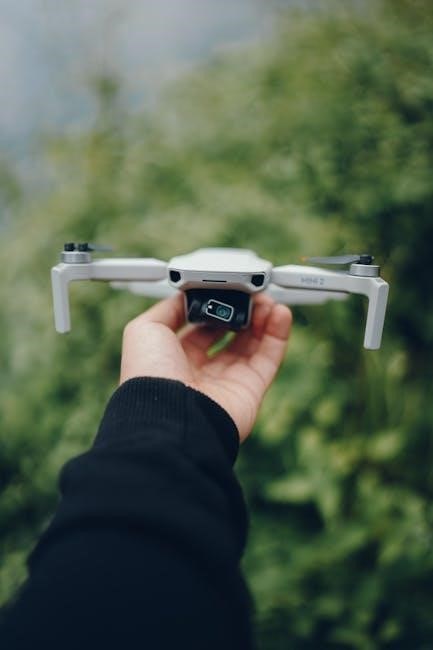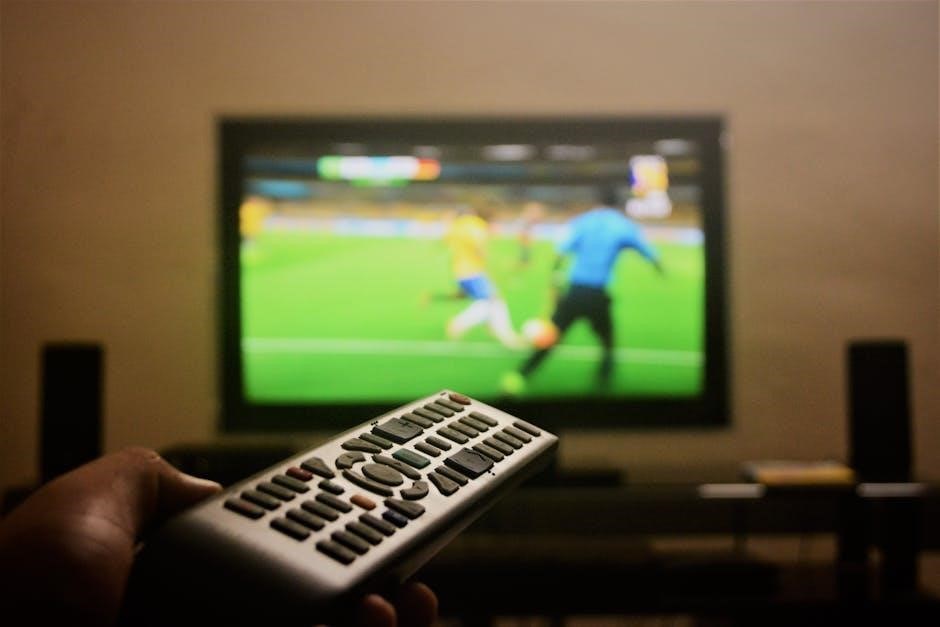The Minka Aire remote control systems offer innovative, user-friendly solutions to enhance your ceiling fan experience․ This guide provides detailed setup, operation, and troubleshooting steps for optimal performance․
1․1 Overview of Minka Aire Remote Control Systems
Minka Aire remote control systems are universal, hand-held devices designed to operate ceiling fans and lights seamlessly; These systems, such as the RC1000 and RC223 models, feature six-speed fan control, light dimming, and a reverse function for seasonal use․ Equipped with learning frequency technology, they offer 256 or 1024 code combinations to prevent interference․ Compatible with DC motors, these remotes ensure smooth operation and customization․ The systems are user-friendly, allowing easy pairing and control of fan and light functions, enhancing overall convenience and comfort in any room․

1․2 Importance of Proper Remote Control Setup

Proper setup of your Minka Aire remote control ensures optimal performance and prevents issues like interference or unresponsiveness․ Correct pairing and frequency calibration guarantee smooth operation․ Following the installation steps, such as battery installation and power cycling, ensures the remote functions as intended․ Proper setup also prevents damage to the transmitter and motor, maintaining the fan’s warranty․ A well-configured system enhances user experience, providing reliable control over fan speed, lighting, and direction․ This initial investment of time ensures long-term convenience and functionality, making it essential for maximizing your ceiling fan’s potential․
Installation and Pairing
Proper installation and pairing ensure seamless remote control functionality․ Install batteries, sync the remote with the fan, and set the correct frequency to avoid interference and ensure smooth operation․
2․1 Battery Installation and Remote Activation
Begin by installing an A23 12-volt battery in the remote control, ensuring proper alignment․ To prevent damage, remove the battery if the remote will not be used for an extended period․ Once the battery is installed, restore power to the ceiling fan and test the remote transmitter․ The remote is equipped with a self-learning frequency function, which ensures proper communication with the fan․ After activation, the remote will automatically calibrate to the fan’s frequency, ensuring smooth operation․ This step is crucial for establishing a reliable connection between the remote and the ceiling fan system․
2․2 Pairing the Remote with the Ceiling Fan
To pair the remote with your ceiling fan, ensure the fan is powered off․ Turn the power on at the circuit breaker, then press and hold the remote’s pairing button until the fan responds․ This process typically takes a few seconds and confirms the remote is synchronized with the fan’s receiver․ For models with learning frequency functions, the remote automatically detects and stores the fan’s frequency․ Pairing ensures seamless communication and allows you to control fan speed, direction, and lighting effortlessly․ Proper pairing is essential for optimal performance and convenience․
2․3 Ensuring Proper Frequency Settings
Proper frequency settings are crucial for uninterrupted remote operation․ Minka Aire remotes often feature learning frequency functions, which detect and store the fan’s frequency automatically․ To ensure accuracy, turn the fan off, restore power, and press the remote’s pairing button․ The remote will scan and synchronize with the fan’s receiver․ With 256 or 1024 code combinations, interference from other devices is minimized․ This process ensures the remote operates smoothly and maintains consistent communication with the ceiling fan, providing reliable control over speed, direction, and lighting functions․ Proper frequency calibration is essential for optimal performance and convenience․

Basic Operation of the Remote Control
The Minka Aire remote offers straightforward control over fan functions, including power, speed, and direction, ensuring an intuitive user experience with essential operations and self-learning frequency for seamless performance․
3․1 Turning the Fan On and Off
Operating your Minka Aire ceiling fan is simple with the remote․ Press the power button, typically located at the top, to turn the fan on or off․ The remote uses a self-learning frequency function to ensure smooth operation․ Once paired, the remote will reliably control the fan’s power․ For first-time use, ensure the fan is properly paired with the remote and the battery is installed․ The remote’s intuitive design allows for seamless on/off functionality, enhancing your overall user experience with minimal effort required․
3․2 Adjusting Fan Speed Settings
Your Minka Aire remote allows precise control over fan speed․ Use buttons 1 through 6 to select from six speed settings: minimum, low, medium-low, medium, medium-high, and high․ These options enable customization to suit any room condition․ The remote also features a reverse button to change blade rotation for seasonal use, optimizing air circulation in summer and winter․ With a self-learning frequency function, the remote ensures smooth speed transitions and reliable operation․ Proper pairing and battery installation are essential for consistent performance․ This feature enhances comfort and energy efficiency seamlessly․
3․3 Understanding Reverse Function for Seasonal Use
The reverse function on your Minka Aire remote optimizes airflow for different seasons․ In summer, counterclockwise blade rotation maximizes cooling․ Switching to clockwise during winter circulates warm air more efficiently․ Press the reverse button to change direction․ This feature ensures year-round comfort without adjusting settings manually․ Proper use enhances energy efficiency and maintains consistent room temperatures, making it a versatile and convenient option for all seasons․ Regular use of this function can improve overall fan performance and user satisfaction, ensuring optimal air circulation throughout the year․
Advanced Features of the Remote Control
The Minka Aire remote offers advanced features like light dimming, speed customization, and seamless syncing with wall controls․ Its 256-code learning function prevents interference and ensures smooth operation․
4․1 Light Dimming and Brightness Control
The Minka Aire remote allows precise control over light brightness, enabling users to create the perfect ambiance․ With dedicated buttons for UP and DOWN lights, you can independently toggle each light source․ Pressing the button turns the light on or off, while holding it adjusts the brightness․ The system features an auto-resume function, remembering the last brightness setting for seamless operation․ This advanced dimming capability ensures flexible lighting options, enhancing both convenience and comfort in your space․
4․2 Speed Presets and Customization Options
The Minka Aire remote offers six customizable speed settings, from minimum to high, ensuring optimal airflow control․ Buttons labeled 1 to 6 allow users to easily select their preferred speed․ The remote also features a reverse function, enabling seasonal adjustments for enhanced comfort․ These preset options can be tailored to individual preferences, providing a personalized experience․ The system’s advanced customization ensures efficient energy use and seamless fan operation, making it a versatile solution for modern ceiling fan control․
4․3 Syncing with Wall Controls for Seamless Operation

Minka Aire remotes can be synced with wall controls to ensure smooth, dual-operation functionality․ This integration allows users to control their ceiling fan and lights from both the remote and wall switch seamlessly․ The system is designed to eliminate interference, ensuring consistent performance․ By syncing the devices, users can enjoy enhanced convenience and flexibility in managing their fan settings․ This feature is particularly useful for maintaining a clutter-free space while retaining full control over fan operations․ Refer to the manual for specific pairing instructions to achieve this seamless integration․

Troubleshooting Common Issues
Common issues include remote interference, unresponsive controls, and frequency calibration errors․ Check battery installation, ensure proper pairing, and reset frequency settings to resolve these problems effectively․
5․1 Resolving Remote Interference Problems
Remote interference can be caused by nearby electronic devices or other remotes using similar frequencies․ To resolve this, ensure the remote and fan are properly paired․ Replace batteries with fresh ones to strengthen the signal․ Reset the frequency by turning the fan’s power off at the circuit breaker, waiting a few seconds, and turning it back on․ Move other electronic devices away to minimize interference․ Test the remote again after these steps․ If issues persist, re-pair the remote with the fan following the manual’s instructions for optimal performance․
5․2 Fixing Unresponsive Remote Controls
If your Minka Aire remote becomes unresponsive, start by checking the battery․ Replace the A23 12-volt battery with a fresh one to ensure proper function․ Clean the remote’s sensors and buttons to remove dirt or debris․ Re-pair the remote with the ceiling fan by resetting the power at the circuit breaker and following the pairing process outlined in the manual․ If issues persist, test the remote’s range and ensure no physical obstructions are blocking the signal․ Contact customer support if the problem remains unresolved for further assistance or potential replacements․
5․3 Addressing Frequency Calibration Errors
If your Minka Aire remote experiences frequency calibration issues, start by ensuring no other devices are causing interference․ Turn off the ceiling fan’s power at the circuit breaker for 30 seconds, then restore it․ Re-pair the remote by following the learning frequency function process in the manual․ Ensure the remote is within range and free from obstructions․ If calibration errors persist, consult the manual or contact customer support for assistance․ Regularly updating settings and avoiding signal blockers can help maintain optimal performance․
Maintenance and Care
Regularly clean the remote with a soft cloth and mild detergent․ Replace A23 12-volt batteries as needed, removing them during long storage to prevent damage․ Store the remote in a dry, cool place away from direct sunlight to ensure optimal performance and longevity․
6․1 Cleaning the Remote Control
To maintain your Minka Aire remote control’s functionality, clean it regularly with a soft, dry cloth․ For stubborn stains, lightly dampen the cloth with mild detergent, but avoid harsh chemicals or excessive moisture․ Ensure the remote is dry before use to prevent damage to internal components․ Regular cleaning prevents dust buildup and ensures reliable performance․ Additionally, removing the A23 12-volt battery during long storage periods helps prevent corrosion and maintains the remote’s efficiency․ Always store the remote in a cool, dry place to preserve its longevity and responsiveness․

6․2 Replacing Batteries and Preventing Damage
To ensure optimal performance, replace the A23 12-volt battery when the remote control shows signs of weak signal or reduced functionality; Insert the new battery with the positive terminal facing up to match the remote’s polarity․ Avoid mixing old and new batteries to prevent power imbalances․ Regularly inspect batteries for corrosion or leakage, and clean terminals with a soft cloth if necessary․ Remove batteries during extended storage to prevent damage from leakage․ Always use alkaline batteries to maintain reliability and longevity of your Minka Aire remote control system․
6․3 Storing the Remote When Not in Use
When not in use, store the Minka Aire remote control in a cool, dry place to prevent damage․ Use the provided wall holster to keep it organized and within reach․ Remove batteries if the remote will be unused for an extended period to avoid leakage or corrosion․ Clean the remote with a soft cloth before storage to ensure buttons remain responsive․ Avoid exposing the remote to extreme temperatures or humidity, as this may affect its performance․ Proper storage will help maintain the remote’s functionality and extend its lifespan․
